#data mosh
Explore tagged Tumblr posts
Text
©️ 2025 Jeremiah Ray
#glitch art#jeremiah ray#abstract art#artists on tumblr#jeremiah ray art#digital art#artwork#glitched#digital painting#glitch collective#glitch artwork#glitch aesthetic#glitch core#glitch video#glitchcore#glitch artist collective#data mosh#jeremiah ray artwork#abstract video#abstraktekunst
20 notes
·
View notes
Text
youtube
Glitch Guild weekly prompt: Urban
Music by me!
4 notes
·
View notes
Text
Available on SoundCloud, YouTube, & AudioMack
[unknown source] presents Made In Nebraska’s official single from his next project titled “Night’s In Nebraska”
Recorded, Written, & Mixed @ “End of the rainbow creations studios”
Mixed & Mastered by Keyhole Vision Studios
Cover art by *graphic content*
Produced by Mirrored Spirit
Genre: #MidwestHipHop #Indierock, #FuturePunk, #Soul, #Blues, #rnb, #Midwestemo , #shoegaze, #punkrock, #lofihiphop, & #spiritualmusic, #rock
Uploaded on the behalf of Lightheaded publication’s
#art#vaporwave#thrasher#* graphic content *#aesthetic#[unknown source]#content#glitch#data mosh#graphic#graphic content#life#lofi#thrasher mag#thrasher magazine#unknown#*graphic content*#aestheitcs#alternative#edit#indie rock#0#trippy#lsd
0 notes
Text


Hex editing
83 notes
·
View notes
Text

the Flesh and the Machine.
17 notes
·
View notes
Text


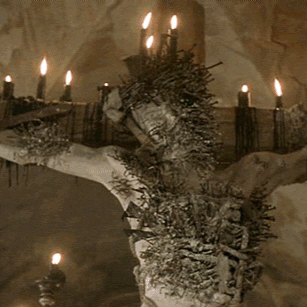



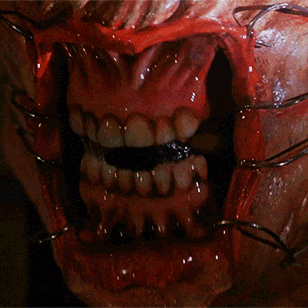


ANON REQUEST!! Lamb from cult of the lamb stimboard. With red/black/white with satanic / demonic themes as well as sheep fursuits!!!!! Thank you for requesting!!
X X X
X X X
X X X
#stimboard#cult of the lamb#red#black#grey#white#fursuit#sheep fursuit#hoof paws#bathbomb#data moshing#gore#glitch#glitching#fake gore#bloody#maggots#bugs#devil's tooth#mushroom#blood#angel#religion#jesus#meat#irl people#cosplay#myposts#request
51 notes
·
View notes
Text
#me#vid#emo girl#emocore#goth girl#mall goth#soundcloud#menhera#2000s emo#2000s#2000s nostalgia#video editing#data moshing#datamosh#pennywise#clowncore#clown#it#it the movie#horror#horror movies#horror movie edit#red hair#emo#emo scene#venom#evil clown#crystal castles
9 notes
·
View notes
Text

datawarped voldritch too
8 notes
·
View notes
Text
DOOOONE!! Spamton's glitches are real btw, I data moshed his clean animation and used the results for some effects. I made the audio before he turned 46, so it's a little outdated.
Time stats and the closeup stills are under the cut!
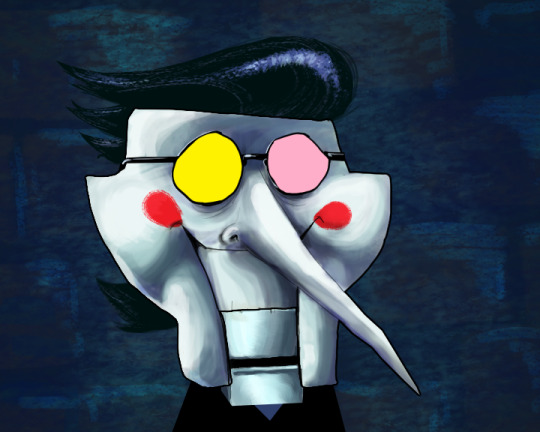
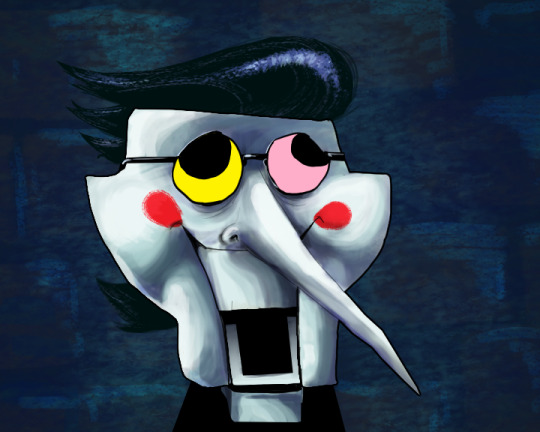
Animation time: 07:42 Color and Line: 09:42 Painting: 03:47 Compositing and glitching up Spamton's animation: 03:11 Total Time: 24 hrs 21 min spread over 7 days
#myart#spamton#animation#deltarune#kris deltarune#kris dreemurr#spamton g spamton#flapjack#he's like a weird little ms paint creature
3K notes
·
View notes
Text
(K-hole)

#Lossy#data#data moshing#3d rendering#dystopian#c4d#unity#unreal engine#vr#ar#virtual reality#3d art#art#artwork#artist#digital artist#synth#chillwave#brown#mars#jupiter#ai#yamataro#yamatar0#ketamine#acid#drugs#high#trippy#trip
9 notes
·
View notes
Text
Today is Erev Yom Ha'Shoah (Eve of Holocaust Memorial Day) in Israel. It will be observed by Jews outside of Israel, too.

The Hebrew date was chosen to honor the outbreak of the Warsaw Ghetto Uprising. It's also a week before Erev Yom Ha'Zikaron Le'Chalalei Ma'archot Yisrael (Eve of Israel's Memorial Day for its Fallen Soldiers and Terror Victims), which is itself observed a day before Yom Ha'Atzmaut Le'Yisrael (Israel's Independence Day). A lot of people have remarked on the connection between the three dates. On Yom Ha'Atzmaut, we celebrate our independence, which allows us to determine our own fate, and defend ourselves without being dependent on anyone else, right after we remember the price in human life that we have paid and continue to pay for this independence, and a week before we mourn the price we've had to pay for not getting to have self defence during the Holocaust. NEVER FORGET that in one Nazi shooting pit alone (out of almost two thousand) during just 2 days (Erev Yom Kippur and Yom Kippur 1941), more Jewish men, women and kids were slaughtered than in the 77 years since Israel's Independence War was started by the Arabs. This unbreakable connection between the living and the dead, between our joy and our grief, is often addressed with the Hebrew phrase, במותם ציוו לנו את החיים, "With their death, they ordered us to live."

On this Erev Yom Ha'Shoah, I'd like to share with you some data, published on Thursday by Israel's Central Bureau for Statistics (source in Hebrew).
The number of Jews worldwide is 15.7 million, still lower than it was in 1939, before the Holocaust, 85 years ago (that is what a genocide looks like demographically).
7.1 million Jews live in Israel (45% of world Jewry) 6.3 million Jews live in the US (40% of world Jewry)
Here's the data for the top 9 Jewish communities in the world:
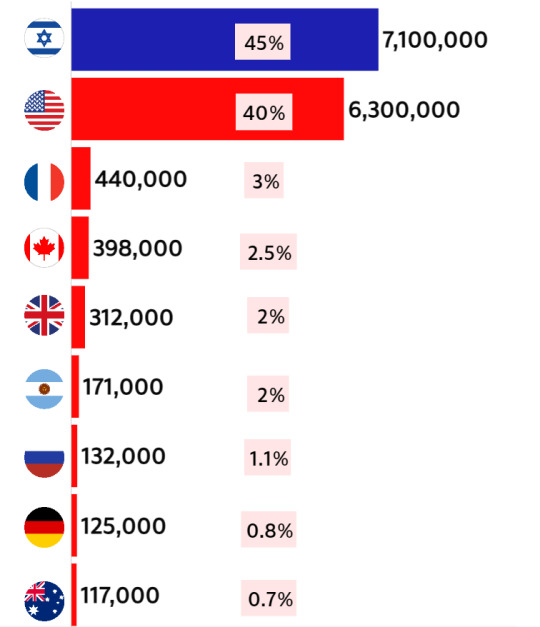
There are about 133,000 Holocaust survivors currently living in Israel. Most (80%) live in big cities in central Israel. Around 1,500 are still evacuated from their homes in northern and southern Israel due to the war (back in January, on International Holocaust Remembrance Day, there was a report about 1,894 survivors who also became internal refugees due to the war. Source in Hebrew). One Holocaust survivor, 86 years old Shlomo Mansour, is still held hostage in Gaza. He survived the Farhud in Iraq.

I haven't seen any official number for how many survivors had been slaughtered as a part of Hamas' massacre, despite everyone here being aware that Holocaust survivors had been murdered on Oct 7, such as 91 years old Moshe Ridler. Maybe, as we're still discovering that some people thought to have been kidnapped during the massacre, were actually killed on that day, no one wants to give a "final" number while Shlomo has not yet been returned alive.
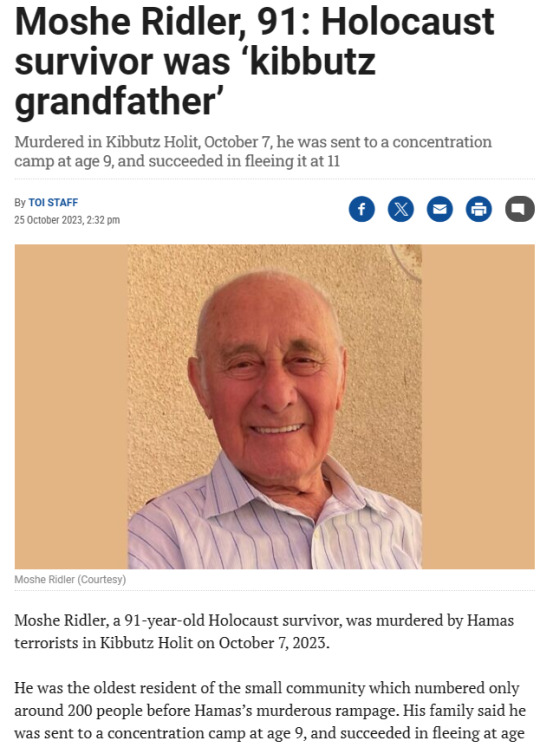
Out of all Israeli Holocaust survivors, 61.1% were born in Europe (35.8% in the countries of the former Soviet Union, 10.8% in Romania, 4.9% in Poland, 2.9% in Bulgaria, 1.5% in Germany and Austria, 1.3% in Hungary, 4.2% in the rest of Europe), 36.6% were born in Asia or Africa (16.5% in Morocco, 10.9% in Iraq, 4% in Tunisia, 2.6% in Libya, 2.1% in Algeria, 0.5% in other Asian and African countries) and 2.3% were born elsewhere.

Out of all Holocaust survivors in Israel, 6.2% managed to make it here before the establishment of the state, despite the British Mandate's immigration policy against it (up until May 13, 1948). 30.5% made it to Israel during its very first years (May 14, 1948 until 1951), another 29.8% arrived in the following decades (1952-1989), and 33.5% made Aliyah once the Soviet Union collapsed, and Jewish immigration to the west (which included Israel) was no longer prohibited by the Soviet regimes (1990 on).
The second biggest community of survivors in the world is in the US, the third biggest (but second biggest relative to the size of the population) is in Australia. I heard from many Holocaust survivors who chose to immigrate there that they wanted to get "as physically far away from Europe as possible."
For a few years now, there's been this project in Israel, called Maalim Zikaron, מעלים זיכרון (uploading memory. Here's the project's site in Hebrew. In English it's called Sharing Memories, and here's the English version of the site) where Israeli celebs are asked to meet up with a Holocaust survivor (it's done in Hebrew), and share the survivor's story and the meeting on their social media on Erev Yom Ha'Shoah (which is today). Each year, there's also one non-Israeli Jewish celeb asked to participate (in English. This time around it's Michael Rapaport, he's meeting Aliza, an 81 years old survivor from the Netherlands, who was hidden along with 9 other Jewish babies for two years. He uploaded a preview of his meeting with her here, where he asked her what it means to her to be a Jew, and from what I understand, he will upload more today to the same IG account). This year, there will be an emphasis on Holocaust survivors who also survived Oct 7 (with 6 of the 20 participating survivors having survived Hamas as well). Here's a small bit from an interview with one such survivor, 90 years old Daniel Luz from kibbutz Be'eri:
(for all of my updates and ask replies regarding Israel, click here)
#israel#antisemitism#israeli#israel news#israel under attack#israel under fire#terrorism#anti terrorism#hamas#antisemitic#antisemites#jews#jew#judaism#jumblr#frumblr#jewish#israelunderattack#shoah#holocaust
466 notes
·
View notes
Text
28 notes
·
View notes
Text
I usually HATE the "character trapped in a video game" trope that's in almost every horror game now cause it's almsot never done right the only time I can think it was good was doki doki and maybe petscop but I just watched Markiplier play MiSide and holy fuck it's good?! Like the graffics enough make it amazing but like. It uses the trope so well and the character design plus the tension and the use of data moshing make such good tension I love it
youtube
#im probably gonna get real annoying about this game like i was with doki doki#miside#Markiplier#horror game#indie horror game#Youtube
91 notes
·
View notes
Note
I've noticed some book covers recently have AI art included in them. Why does it feel like publishing is giving less effort to ensure AI art is not being used? What can other authors do to ensure AI art is not being used for their covers?
I have seen a couple of controversies about this -- one, a Sarah J Maas cover, one a Christopher Paolini cover.
On the one hand, the fact is that MANY covers are made using at least in part stock images -- artists and photographers upload their images to the stock site, the publisher pays whatever licensing fees and uses the image/photo/whatever as part of the design. This is totally normal.
In these two cases, at least, it looks like these images were obtained from stock image sites. I can see a designer searching the stock sites for images (just like they have for years and years), seeing a dope-looking wolf or spaceman or whatever that somebody uploaded, and being like, "cool image!" and paying the fee and using it, just as they have done a thousand times before, and not even thinking anything of it. Which like -- is a LITTLE less scary to me than the publisher, idk, firing the designers and then just having some intern go on an AI bot and say "make me a cover with a wolf on it!"
The problem of course is that (most? all??? much of??) AI-generated "art" is scraping other images/artwork off the internet and, to use the technical term, mish-moshing it, which means that somebody somewhere's intellectual property is being used/altered/god-knows-what, unbeknownst to them. I strongly suspect that, nine or even six months ago or whenever these covers were being designed, the designers and other folks at the publisher didn't even KNOW to be concerned about what was on the stock sites -- like this technology is moving at SUCH a rapid pace, it's head-spinning.
I can tell you what agents are concerned about at the moment, and it's three-pronged:
-- we don't want our authors or artists work to be data-mined / scraped to "train" AI learning models/bots
-- we don't want covers or other imagery created by AI
-- we don't want AI generated narration for audiobooks
Agents are working to get this kind of language into contracts currently -- this is literally one of the top topics at all of our agency meetings, and I'm sure is a top topic at publishers as well. However different publishers are at different stages here -- some are including it, some are still working on the language, etc -- but I suspect/hope that these kinds of clauses will be standard in publishing contracts across the board by the end of the year. (Though of course it might be evolving as the technology evolves.)
281 notes
·
View notes
Text
"In social science research, including criminology, the convention is to think of confinement in terms of placement in jails and prisons, therefore reinforcing a skewed interpretation of ‘the rise in incarceration’ in the USA. Under this interpretation, the first half of the 20th century is conceived as an era of relative stability in terms of incarceration, with an explosion in this area in the 1980s onward, in the form of immense growth in the capacity of prisons and jails. However, as Harcourt (2006) suggests, if the data on mental hospitalization and institutionalization were also covered in such studies under the prism of incarceration, then the ‘rise in incarceration’ would have reached its peak in 1955, when mental hospitals reached their highest capacity. Put differently, the incarceration rates in prisons and jails today (although appallingly high by any standards) barely scrape the levels of incarceration during the early part of the 20th century because of the then massive confinement in hospitals...
...Broadening the scope of research on incarceration to include a variety of confinements (such as psychiatric hospitals, nursing homes, institutions for those labeled as intellectually and developmentally disabled) will take into account the work of scholars who have already theorized the carceral along these lines (such as Foucault, Goffman, Scull and others) and can also generate new work in this vein. It will also account for the lived reality of prisoners with disabilities who are caught in the webs of the institution- and prison-industrial complexes. Under this formulation, incarceration is understood as a continuum of carceral edifices, or as an institutional matrix in which disability is a core component, not simply an added category of analysis.
This call for connecting analysis of incarceration with disability is also a call to pay attention to the lives of mostly poor people of color who are still incarcerated worldwide in nursing homes, institutions for those with labels of mental illness and/or intellectual disability and prisons, and bring their perspective to bear on what Chris Bell characterized as ‘White disability studies’ (2006). My main argument here is that the history of disability is the history of incarceration."
-Liat Ben Moshe, Disabling Incarceration: Connecting Disability to Divergent Confinements in the USA
#personal#prison abolition#disability#disability justice#psych abolition#mad studies#mad liberation#antipsych#i linked the article this is from but very much reccomend reading the full book. i can share pdf of that with people#the article is great but the full book has so much more room to delve into this stuff
97 notes
·
View notes
